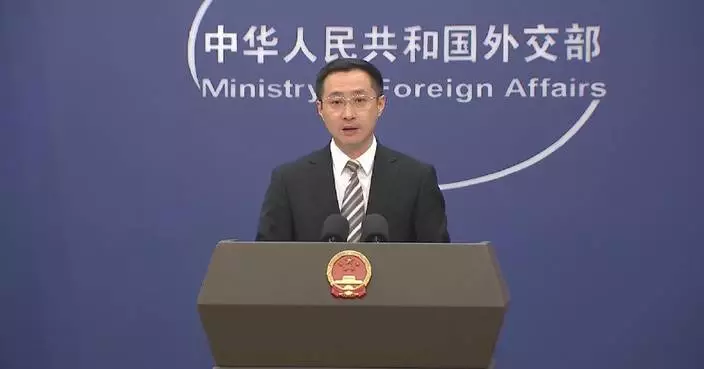Southwest China's Chongqing Municipality, which is renowned for spicy hotpot, has intensified its efforts to promote the industry's digital transformation.
According to the Chongqing Municipal Commission of Commerce, the city has strived to achieve an output value of 500 billion yuan (about 69.77 billion U.S. dollars) from the hotpot industry by 2027 and become the world's hotpot capital by 2035.
As of 2023, Chongqing had already had more than 36,000 hotpot restaurants, with an industrial chain output value of more than 300 billion yuan. The booming hotpot consumption and the city's digital development efforts promote the sector's intelligent upgrading.
An industrial cluster has formed in the city's Hechuan District, bringing about manufacturers of hotpot ingredients and broth.
In recent interviews with the China Global Television Network (CGTN), company representatives said they have integrated technlogy into their production and research and development processes to offer products of higher quality to consumers.
"We are the first enterprise in China to standardize and modernize the production of hotpot butter. As an industry pioneer with a 40-year history, we have been working on the intelligent upgrade for our equipment in recent years, to improve the quality of the hotpot butter, as well as efficiency,”said Zhou Keyu, general manager of Chongqing Muge Food.
"In these tubes are the various hotpot soup base, and we're now testing for the optimal concentration of salt. Our testing center's purpose is to establish standards for the quality and taste of hotpot broth via more scientific methods,” said Wang Wei, supervisor of the inspection and testing center at Chongqing Mei Xiang Group.
"Since 2000, our hotpot seasoning compound production has gradually dived into today's, fully intelligent and unmanned era. We can provide customers with customized food ingredients from the source, such as different types of new chilies, Sichuan peppers and so on. We will also use our big data platform for whole-chain monitoring,” said Liu Fangjun, a representative of Chongqing Mei Xiang Group.

China's Chongqing steps up efforts to promote digital transformation of hotpot industry
Senior representatives from major regional news media organizations, gathering at the ongoing 12th Global Video Media Forum (VMF) in China, say they are looking to amplify the voices of the media in the Global South to help consolidate cooperation and friendship in an ever more challenging global environment.
The forum opened in Quanzhou in east China's Fujian Province on Tuesday, bringing together 200 media representatives from over 60 countries and regions in the historic coastal city.
By working more closely together, media organizations in the Global South can reap rewards that might otherwise be unavailable, according to Ahmed Nadeem, Secretary-General of the Asia-Pacific Broadcast Union.
"If we work together, there is an opportunity for us to bring out the best from these Global South countries who have much less resources," he said.
Other media representatives at the VMF stressed that in challenging times, it is even more important for developing countries to have their voices heard on the global stage.
"[The Global] South media have a lot of responsibility to build a new opinion," said Issoufou Sare, Director-General of BF1 Television.
"[The media can provide] solutions for misunderstandings or stereotypes. So the media have a major role. They can bridge our cultures and make us know each other better," said Feten Fardi, head of Arab and International Cooperation Unit, Arab States Broadcasting Union.
The event also witnessed the launch of the "Global South Media Dialogue and Cooperation Mechanism and Joint Initiative," a program to support closer cooperation led by China Media Group.
"That will help to promote our voices, our realities to make the world know better about our customs, realities, about our history, about our culture, customs, about our problems, but also our achievements," said Martin Hacthoun, chief editor of Press Latina News Agency.
The two-day VMF is being held under the theme "Intelligence Without Frontiers, Vision Beyond The Horizon -- Media's Role in Communication and Cultural Exchange."
Launched by the CCTV Video News Agency (CCTV+) in 2011, the VMF is an annual professional journalism forum focusing on the latest trends and innovations in news and journalism, which provides a highly specialized, unique and interactive platform for domestic and foreign media peers.

Media groups aim to amplify voice of Global South at VMF










